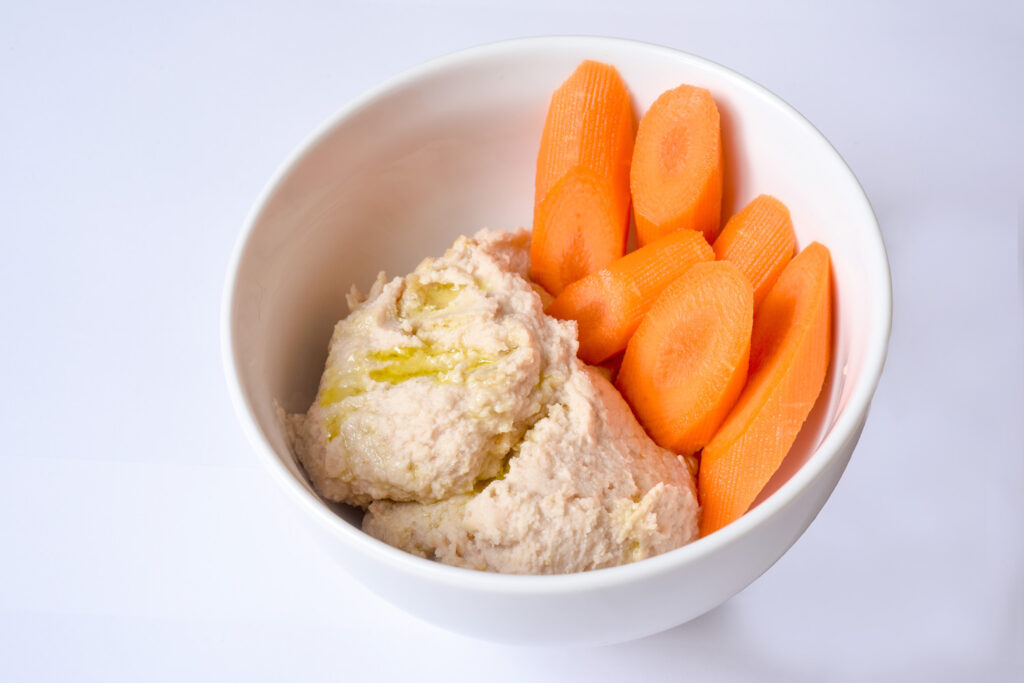National Nutrition Month: Fuel for the Future
go.ncsu.edu/readext?921761
en Español / em Português
El inglés es el idioma de control de esta página. En la medida en que haya algún conflicto entre la traducción al inglés y la traducción, el inglés prevalece.
Al hacer clic en el enlace de traducción se activa un servicio de traducción gratuito para convertir la página al español. Al igual que con cualquier traducción por Internet, la conversión no es sensible al contexto y puede que no traduzca el texto en su significado original. NC State Extension no garantiza la exactitud del texto traducido. Por favor, tenga en cuenta que algunas aplicaciones y/o servicios pueden no funcionar como se espera cuando se traducen.
Português
Inglês é o idioma de controle desta página. Na medida que haja algum conflito entre o texto original em Inglês e a tradução, o Inglês prevalece.
Ao clicar no link de tradução, um serviço gratuito de tradução será ativado para converter a página para o Português. Como em qualquer tradução pela internet, a conversão não é sensivel ao contexto e pode não ocorrer a tradução para o significado orginal. O serviço de Extensão da Carolina do Norte (NC State Extension) não garante a exatidão do texto traduzido. Por favor, observe que algumas funções ou serviços podem não funcionar como esperado após a tradução.
English
English is the controlling language of this page. To the extent there is any conflict between the English text and the translation, English controls.
Clicking on the translation link activates a free translation service to convert the page to Spanish. As with any Internet translation, the conversion is not context-sensitive and may not translate the text to its original meaning. NC State Extension does not guarantee the accuracy of the translated text. Please note that some applications and/or services may not function as expected when translated.
Collapse ▲National Nutrition Month® is an annual campaign created 50 years ago in 1973 by the Academy of Nutrition and Dietetics. During the month of March, everyone is invited to learn about making informed food choices and developing healthful eating and physical activity habits.
This year’s theme is “Fuel for the Future“. Eating with sustainability in mind is a tasty way to nourish ourselves during every phase of life and protect the environment. Small goals can have a cumulative, healthful effect. Every little bit of nutrition is a step in the right direction!
Some simple ways to get started eating better include planning nutritious, tasty meals in advance and learning how to prepare them at home. It is recommended that you eat a variety of nutritious foods from all of the food groups and take time to read Nutrition Facts Labels. A Registered Dietitian Nutritionist can help you create healthy habits that are sustainable and celebrate your unique needs.
Go to the official website for National Nutrition Month, you will find a wealth of information with 5 weekly themes.
- Eat with the environment in mind
- See a Registered Dietitian Nutritionist (RDN)
- Stay nourished and save money
- Eat a variety of foods from all food groups
- Make tasty foods at home
Another tool available to you is the Dietary Guidelines for Americans. The Dietary Guidelines translates the current science on diet and health into guidance to help people choose foods and beverages that comprise a healthy and enjoyable dietary pattern—the “what” and “how much” of foods and beverages to consume to achieve good health, reduce risk of diet-related chronic diseases, and meet nutrient needs. The Dietary Guidelines are just one piece of the nutrition guidance landscape to help people learn how to make informed food choices and develop healthy eating and physical activity habits.
Try this delicious recipe from Med Instead of Meds. Traditional hummus is made with chickpeas (also called garbanzo beans). This recipe uses white beans. It gives it a great mild flavor that lets the blast of lemon come through, and it’s very easy to make. Serve with carrot and/or celery sticks for a great snack or lunch.
White Bean Hummus

Serves 14
Serving Size: ¼ cup
Prep Time: Dried beans: 24 hours, Canned beans: 10 minutes
Cook Time: (to cook dried beans) 1 hour 30 minutes
Total Time: 15 minutes (once beans are cooked)
Ingredients
- 3 cups dried white beans (great Northern beans or other white bean) (can used canned, see note below)
- ½ cup lemon juice (more if you like lemon)
- 2 tablespoons olive oil to taste
- ⅔ cup Tahini
- Salt and pepper to taste
- Olive oil for drizzling
Directions
- Soak the beans overnight covered in water.
- Cook beans slowly (a slow cooker works well) until very done. They should be very mushy when you smash them between your fingers. Drain. (Note: you can use 3 cans of canned beans – rinse, drain well, and cook until very mushy.)
- In food processor or Vitamix style blender, place all the beans and process with some of the lemon juice and olive oil, adjusting as needed for taste and consistency.
- Add water as needed to make a smooth mixture. Process well until very smooth.
- Place the smooth mixture in a bowl and add the tahini. Stir well and adjust with water for texture.
- Add salt and pepper to taste.
- Drizzle with olive oil.
Nutrition Information per Serving
(Based on ¼ teaspoon salt and ¼ teaspoon pepper)
- Serving Size: ¼ cup
- Vegetables: ¼ cup
- Fruits: 0 cups
- Calories: 141 calories
- Carbohydrates: 12 grams
- Fiber: 3 grams
- Protein: 6 grams
- Fat: 8 grams
- Sodium: 57 mg




